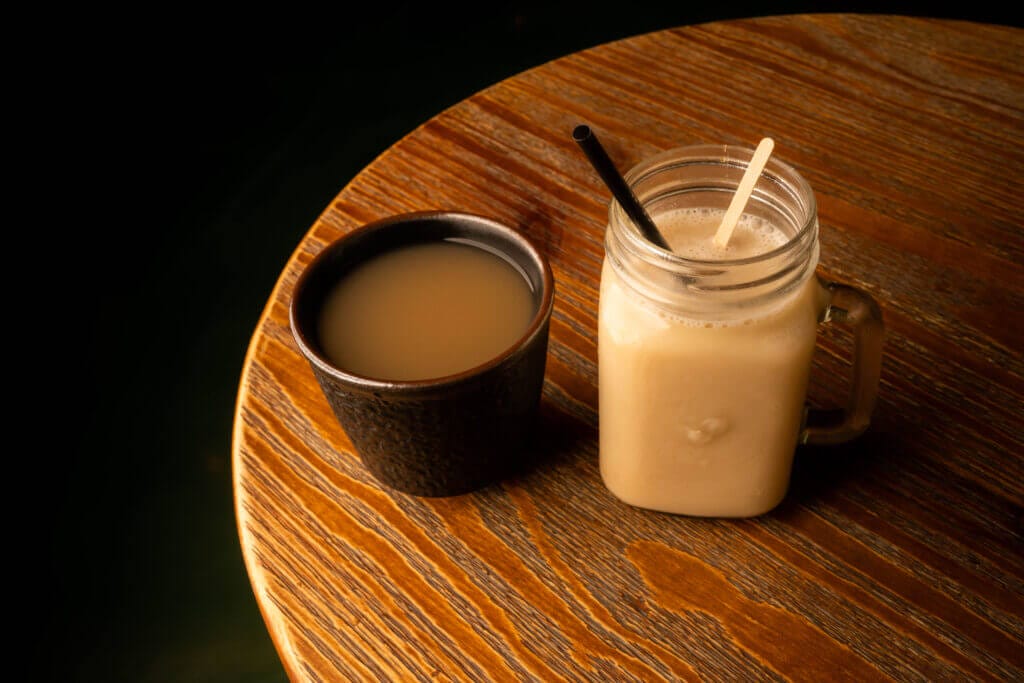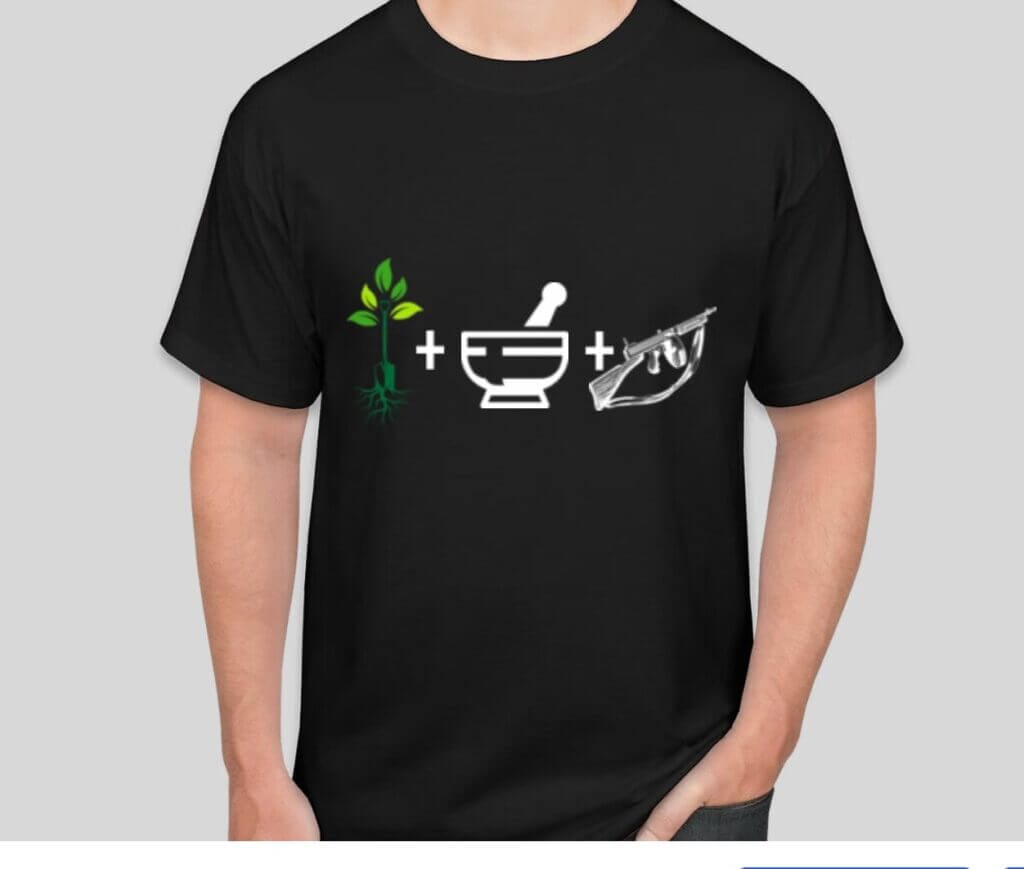kratom and kava! part 1
Kratom and Kava: Origins
Kratom (Mitragyna speciosa) is a tropical tree native to Southeast Asia, particularly in countries like Thailand, Indonesia, Malaysia, and Papua New Guinea. It belongs to the coffee family (Rubiaceae) and has been used traditionally for centuries.

Kratom and Kava: Active Ingredients:
Kratom contains over 40 compounds, with the two primary alkaloids being mitragynine and 7-hydroxymitragynine. These alkaloids interact with opioid receptors in the brain, producing effects that can range from stimulating to sedative, depending on the dosage and strain.
Strains:
- Bali Kratom: Originating from Bali, Indonesia, this strain is known for its balanced effects, offering both relaxation and stimulation.
- Maeng Da Kratom: Known for its high potency, Maeng Da is a Thai term meaning “pimp grade.” It’s believed to be a genetically modified version of the Thai kratom strain, with enhanced alkaloid content.
- Thai Kratom: Hailing from Thailand, this strain is traditionally associated with energizing effects. It’s known for its stimulating properties.
- Indo Kratom: From Indonesia, this strain is often considered milder compared to others. It’s favored for its relaxing and mood-enhancing effects.
- Malay Kratom: Originating from Malaysia, Malay kratom is prized for its long-lasting effects. It’s often used for pain relief and relaxation.
- Borneo Kratom: Native to Borneo, this strain is available in red, green, and white vein varieties. Red Borneo is known for its sedative effects, while green and white veins offer more balanced effects.
Cultural Uses:
In Southeast Asia, kratom has been traditionally used for various purposes, including:
- Pain relief
- Energy enhancement
- Mood elevation
- Stress reduction
- Management of opioid withdrawal symptoms
Kava:
kratom and kava: Kava Origins:
Kava (Piper methysticum) is a shrub native to the South Pacific islands, particularly Fiji, Vanuatu, Tonga, and Hawaii. It has a long history of cultural and ceremonial significance in these regions.
kratom and kava: Kava Active Ingredients:
Kava contains compounds called kavalactones, which are responsible for its psychoactive effects. The primary kavalactones include kavain, dihydrokavain, methysticin, and dihydromethysticin. These compounds have sedative, anxiolytic (anxiety-reducing), and muscle-relaxant properties.
kratom and kava: Kava Strains:
- Noble Kava: Considered the highest quality kava, noble kava refers to varieties that are cultivated for their lack of toxic compounds and pleasant effects. Noble kava strains include Borogu, Borongoru, and Melomelo.
- Tudei Kava: Also known as two-day kava, tudei varieties contain higher levels of potentially harmful compounds, such as flavokavains. They are less desirable due to their more sedative effects and potential for adverse reactions.
kratom and kava: Kava Cultural Uses:
Kava has deep cultural significance in the South Pacific islands, where it’s consumed in social and ceremonial contexts. Traditionally, kava has been used for:
- Relaxation and stress relief
- Social bonding
- Spiritual ceremonies
- Treatment of anxiety and insomnia

Kratom and Kava! Kava Key Differences:
- Effects: Kratom’s effects can range from stimulating to sedative, depending on the strain and dosage, while kava is primarily known for its relaxing and anxiolytic properties.
- Active Ingredients: Kratom contains alkaloids that interact with opioid receptors, whereas kava contains kavalactones that primarily affect the central nervous system.
- Cultural Significance: Kratom is deeply ingrained in the traditional cultures of Southeast Asia, particularly in countries like Thailand and Malaysia, while kava holds significant cultural importance in the South Pacific islands.
Both kratom and kava have gained popularity beyond their places of origin, with enthusiasts around the world using them for various purposes, including relaxation, mood enhancement, and as alternatives to pharmaceuticals. However, it’s important to use them responsibly and be aware of potential risks and interactions with other substances.
Simple Recipes for both kava & kratom teas:
Kava Tea Recipes:
- Classic Kava Tea:
- Ingredients: Kava root powder, water
- Instructions: Mix 2-4 tablespoons of kava root powder with hot water. Let it steep for 10-15 minutes, then strain using a fine mesh strainer or cheesecloth. Serve warm.
- Coconut Kava Chai Tea:
- Ingredients: Kava root powder, chai tea bags, coconut milk, honey
- Instructions: Steep chai tea bags in hot water. Add 2-4 tablespoons of kava root powder to the brewed chai tea. Stir in coconut milk and honey to taste. Strain and enjoy.
- Kava Mint Tea:
- Ingredients: Kava root powder, fresh mint leaves, hot water, honey
- Instructions: Steep fresh mint leaves in hot water for 5 minutes. Add 2-4 tablespoons of kava root powder and let it steep for an additional 10 minutes. Strain, sweeten with honey if desired, and serve.
- Citrus Kava Tea:
- Ingredients: Kava root powder, orange peel, lemon slices, hot water
- Instructions: Steep orange peel and lemon slices in hot water for 5 minutes. Add 2-4 tablespoons of kava root powder and steep for another 10 minutes. Strain and serve with a slice of lemon.
- Kava Lavender Tea:
- Ingredients: Kava root powder, dried lavender buds, hot water, agave syrup
- Instructions: Steep dried lavender buds in hot water for 5 minutes. Add 2-4 tablespoons of kava root powder and let it steep for an additional 10 minutes. Strain, sweeten with agave syrup, and enjoy the calming aroma.
- Spiced Kava Tea:
- Ingredients: Kava root powder, cinnamon sticks, cloves, hot water, honey
- Instructions: Simmer cinnamon sticks and cloves in hot water for 10 minutes. Add 2-4 tablespoons of kava root powder and steep for another 10 minutes. Strain, sweeten with honey, and serve with a sprinkle of cinnamon.
- Kava Turmeric Tea:
- Ingredients: Kava root powder, turmeric powder, ginger slices, hot water, coconut milk
- Instructions: Steep ginger slices and turmeric powder in hot water for 5 minutes. Add 2-4 tablespoons of kava root powder and let it steep for an additional 10 minutes. Strain, stir in coconut milk, and enjoy the anti-inflammatory benefits.
- Vanilla Kava Tea Latte:
- Ingredients: Kava root powder, vanilla extract, almond milk, hot water, maple syrup
- Instructions: Mix almond milk with hot water and heat until warm. Stir in vanilla extract and 2-4 tablespoons of kava root powder. Sweeten with maple syrup, strain, and froth the mixture for a creamy latte.
- Kava Honey Tea:
- Ingredients: Kava root powder, hot water, raw honey
- Instructions: Mix 2-4 tablespoons of kava root powder with hot water. Stir in raw honey to taste and enjoy the soothing effects of this simple yet delicious tea.
- Berry Kava Tea:
- Ingredients: Kava root powder, mixed berries (fresh or frozen), hot water, agave syrup
- Instructions: Blend mixed berries with hot water until smooth. Strain the berry mixture and return it to the pot. Add 2-4 tablespoons of kava root powder and let it steep for 10 minutes. Sweeten with agave syrup, strain again if necessary, and serve.

Kratom Tea Recipes:
- Basic Kratom Tea:
- Ingredients: Kratom powder, water
- Instructions: Boil water and add desired amount of kratom powder. Simmer for 10-15 minutes, then strain and serve.
- Citrus Kratom Tea:
- Ingredients: Kratom powder, lemon juice, honey, water
- Instructions: Boil water and add kratom powder. Add a splash of lemon juice and honey. Simmer for 15 minutes, strain, and serve with a slice of lemon.
- Ginger Kratom Tea:
- Ingredients: Kratom powder, fresh ginger slices, honey, water
- Instructions: Boil water with fresh ginger slices. Add kratom powder and simmer for 10-15 minutes. Strain, sweeten with honey, and enjoy the spicy warmth.
- Chamomile Kratom Tea:
- Ingredients: Kratom powder, chamomile tea bags, honey, water
- Instructions: Steep chamomile tea bags in hot water. Add kratom powder and let it steep for an additional 10 minutes. Strain, sweeten with honey, and relax with this calming blend.
- Peppermint Kratom Tea:
- Ingredients: Kratom powder, fresh peppermint leaves, honey, water
- Instructions: Steep fresh peppermint leaves in hot water for 5 minutes. Add kratom powder and let it steep for another 10 minutes. Strain, sweeten with honey, and enjoy the refreshing flavor.
- Turmeric Kratom Tea:
- Ingredients: Kratom powder, turmeric powder, coconut milk, honey, water
- Instructions: Mix turmeric powder with coconut milk and heat until warm. Add kratom powder and simmer for 15 minutes. Strain, sweeten with honey, and enjoy the anti-inflammatory benefits of this golden tea.
- Vanilla Kratom Chai Tea:
- Ingredients: Kratom powder, chai tea bags, vanilla extract, almond milk, honey, water
- Instructions: Steep chai tea bags in hot water. Mix almond milk with vanilla extract and heat until warm. Add kratom powder to the brewed chai tea and simmer for 10 minutes. Strain, sweeten with honey, and enjoy the aromatic blend.
- Lavender Kratom Tea:
- Ingredients: Kratom powder, dried lavender buds, honey, water
- Instructions: Steep dried lavender buds in hot water for 5 minutes. Add kratom powder and let it steep for another 10 minutes. Strain, sweeten with honey, and relax with the soothing aroma of lavender.
- Matcha Kratom Tea:
- Ingredients: Kratom powder, matcha green tea powder, honey, water
- Instructions: Whisk matcha green tea powder with hot water until frothy. Add kratom powder and let it steep for 10 minutes. Strain, sweeten with honey, and enjoy the antioxidant-rich blend.
- Chocolate Kratom Tea:
- Ingredients: Kratom powder, cocoa powder, almond milk, honey, water
- Instructions: Mix cocoa powder with almond milk and heat until warm. Add kratom powder to hot water and simmer for 15 minutes. Strain, mix with the chocolate almond milk, sweeten with honey, and indulge in this decadent treat.
These recipes offer a variety of flavors and ingredients to suit different tastes and preferences. Adjust the dosage of kratom according to your tolerance and desired effects, and always use responsibly. Enjoy your tea time!
The kava bar scene in South Florida
The kava bar scene in South Florida has been steadily growing in popularity over the past few years, offering residents and visitors a unique social experience centered around the consumption of kava beverages. With its laid-back atmosphere, diverse clientele, and emphasis on relaxation and socialization, kava bars have become go-to destinations for those seeking an alternative to traditional nightlife.
Locations and Ambiance:
Kava bars in South Florida can be found in cities like Miami, Fort Lauderdale, West Palm Beach, and beyond. They vary in size and style, ranging from cozy lounges with intimate seating to spacious establishments with outdoor patios. Many kava bars are designed to evoke a tropical vibe, with bamboo décor, comfortable seating areas, and ambient lighting that creates a relaxed atmosphere.
Menu and Offerings:
The menus at South Florida kava bars typically feature a variety of kava-based drinks, as well as other herbal teas, kratom beverages, and non-alcoholic mocktails. Kava drinks are often served in coconut shells or traditional kava bowls, and customers can choose from different varieties of kava, each with its own unique flavor profile and potency.
In addition to kava, many bars offer snacks and light fare, such as fruit bowls, sandwiches, and vegan options, catering to health-conscious patrons looking for nourishing options to complement their beverages.
Events and Activities:
Kava bars in South Florida often host a range of events and activities to attract customers and foster a sense of community. These may include live music performances, open mic nights, yoga classes, and wellness workshops. Some bars also feature outdoor seating areas where guests can enjoy the sunshine and tropical ambiance while sipping their kava drinks.
Health and Wellness Focus:
One of the key draws of kava bars in South Florida is their emphasis on health and wellness. Many patrons frequent these establishments as an alternative to traditional bars and clubs, seeking a social experience that doesn’t involve alcohol or the associated risks. Kava is known for its calming and stress-relieving effects, making it a popular choice for those looking to unwind after a long day or connect with friends in a relaxed setting.
Community and Culture:
The kava bar scene in South Florida has fostered a vibrant community of like-minded individuals who share an interest in holistic health, relaxation, and cultural exploration. Whether it’s striking up a conversation with a fellow patron, attending a themed event, or simply enjoying a quiet moment of reflection, kava bars provide a welcoming space for people from all walks of life to come together and connect.
Overall, the kava bar scene in South Florida offers a refreshing alternative to traditional nightlife, with its focus on health, wellness, and community creating a unique social experience that continues to attract a diverse and enthusiastic following.
Exploring Kratom and Kava Extracts: A Comprehensive Guide
Kratom and kava are two botanicals that have gained popularity for their potential health benefits and psychoactive properties. While both are traditionally consumed in their raw, natural forms, extracts have become increasingly popular due to their convenience and potency. In this guide, we’ll explore the differences between kratom and kava extracts, their potential benefits and risks, and how to use them responsibly.
Understanding Kratom Extracts:
What is Kratom? Kratom (Mitragyna speciosa) is a tropical tree native to Southeast Asia, known for its leaves’ psychoactive properties. It contains alkaloids such as mitragynine and 7-hydroxymitragynine, which interact with opioid receptors in the brain, producing effects that can range from stimulating to sedative.
Kratom Extracts: Kratom extracts are concentrated forms of kratom made by extracting the active alkaloids from the leaves. This extraction process increases the potency of the product, allowing users to achieve stronger effects with smaller doses. Kratom extracts are available in various forms, including tinctures, powders, and capsules.
How to Use Kratom Extracts: Kratom extracts can be consumed in several ways, including:
- Oral Ingestion: Mixing the extract with water or juice and drinking it.
- Sublingual Administration: Holding the extract under the tongue for faster absorption.
- Capsules: Swallowing kratom extract capsules, which provide a convenient and discreet method of consumption.
- Topical Application: Some users apply kratom extract topically for localized pain relief.

Exploring Kava Extracts:
What is Kava? Kava (Piper methysticum) is a plant native to the South Pacific islands, where it has been used for centuries in ceremonial and social contexts. Kava contains compounds called kavalactones, which have sedative, anxiolytic, and muscle-relaxant properties.
Kava Extracts: Kava extracts are concentrated forms of kava made by extracting the kavalactones from the plant’s roots. Like kratom extracts, kava extracts offer a more potent alternative to traditional kava preparations, allowing users to experience stronger effects with smaller doses.
How to Use Kava Extracts: Kava extracts can be consumed in a variety of ways, including:
- Kava Tea: Mixing the extract with hot water to create a potent kava tea.
- Capsules: Swallowing kava extract capsules for a convenient and standardized dose.
- Tinctures: Adding kava extract tinctures to beverages for easy consumption.
- Topical Application: Some users apply kava extract topically for muscle relaxation and pain relief.
Benefits and Risks:
Benefits of Kratom Extracts:
- Potency: Kratom extracts offer stronger effects compared to raw kratom leaf.
- Convenience: Extracts are easy to measure and consume, making them ideal for on-the-go use.
- Variety: Kratom extracts come in various strengths and formulations to suit individual preferences.
Risks of Kratom Extracts:
- Tolerance and Dependence: Regular use of kratom extracts may lead to tolerance and dependence, requiring higher doses to achieve the desired effects.
- Side Effects: Like raw kratom, kratom extracts can cause side effects such as nausea, dizziness, and constipation, especially at higher doses.
Benefits of Kava Extracts:
- Relaxation: Kava extracts promote relaxation and stress relief, making them ideal for unwinding after a long day.
- Anxiety Relief: Kava extracts have anxiolytic properties, helping to alleviate symptoms of anxiety and promote a sense of calm.
- Muscle Relaxation: Kava extracts can help relax muscles and reduce tension, making them useful for relieving physical discomfort.
Risks of Kava Extracts:
- Liver Health: Long-term use of kava extracts may be associated with liver toxicity in some individuals, although the risk appears to be low.
- Interaction with Medications: Kava extracts may interact with certain medications, so it’s essential to consult a healthcare professional before use, especially if you’re taking prescription medications.
Using Extracts Responsibly:
- Start Low, Go Slow: When trying kratom or kava extracts for the first time, start with a low dose and gradually increase as needed.
- Stay Informed: Educate yourself about the potential risks and benefits of kratom and kava extracts, and be mindful of your body’s response to them.
- Use Sparingly: Reserve the use of extracts for times when you need stronger effects, and avoid using them daily to minimize the risk of tolerance and dependence.
- Consult a Professional: If you have any underlying health conditions or are taking medications, consult a healthcare professional before using kratom or kava extracts to ensure they’re safe for you.
In conclusion, kratom and kava extracts offer a convenient and potent alternative to traditional preparations, allowing users to experience stronger effects with smaller doses. However, it’s essential to use extracts responsibly and be mindful of the potential risks associated with their use. By starting with a low dose, staying informed, and consulting a healthcare professional when needed, you can enjoy the benefits of kratom and kava extracts safely and responsibly.

